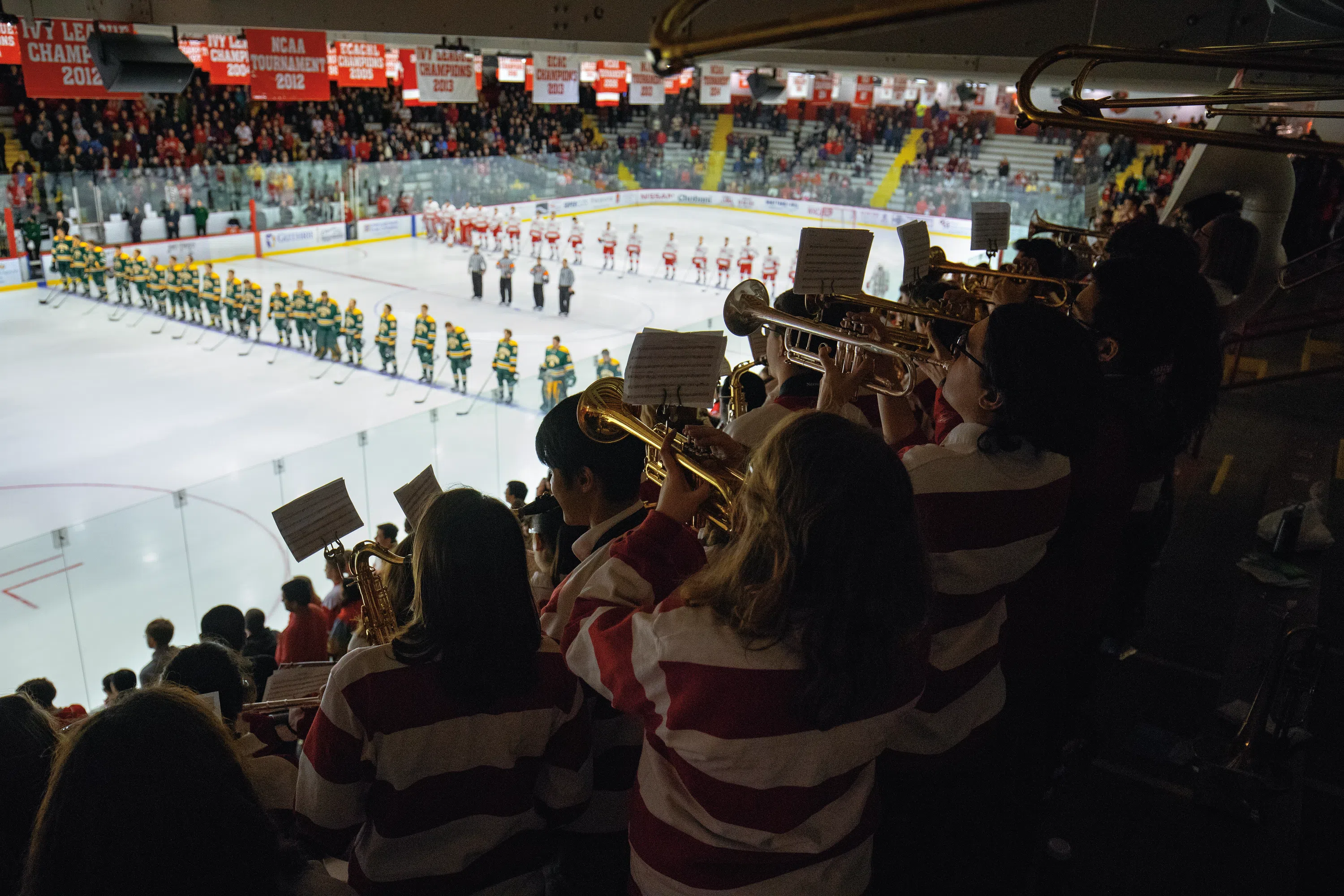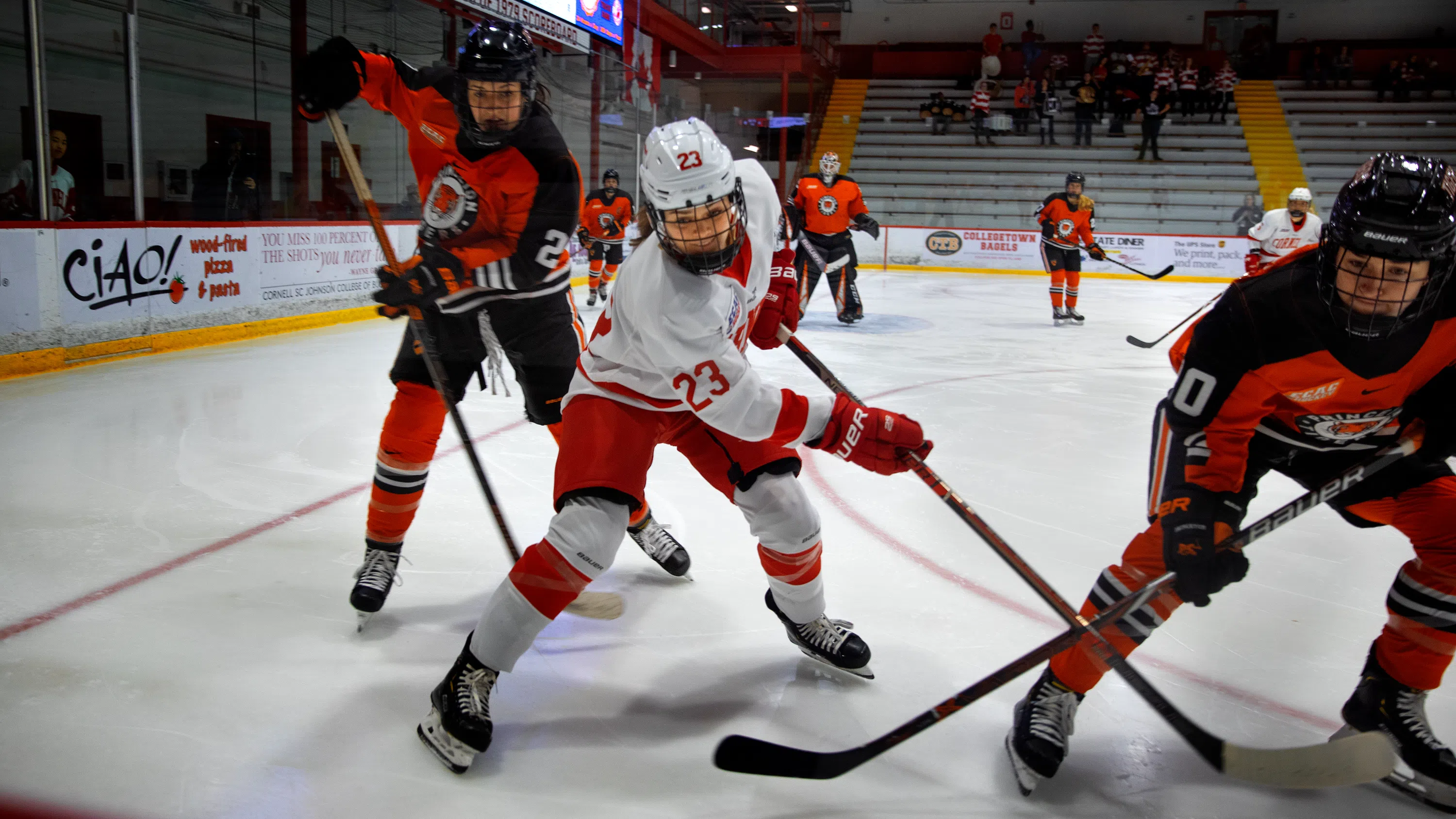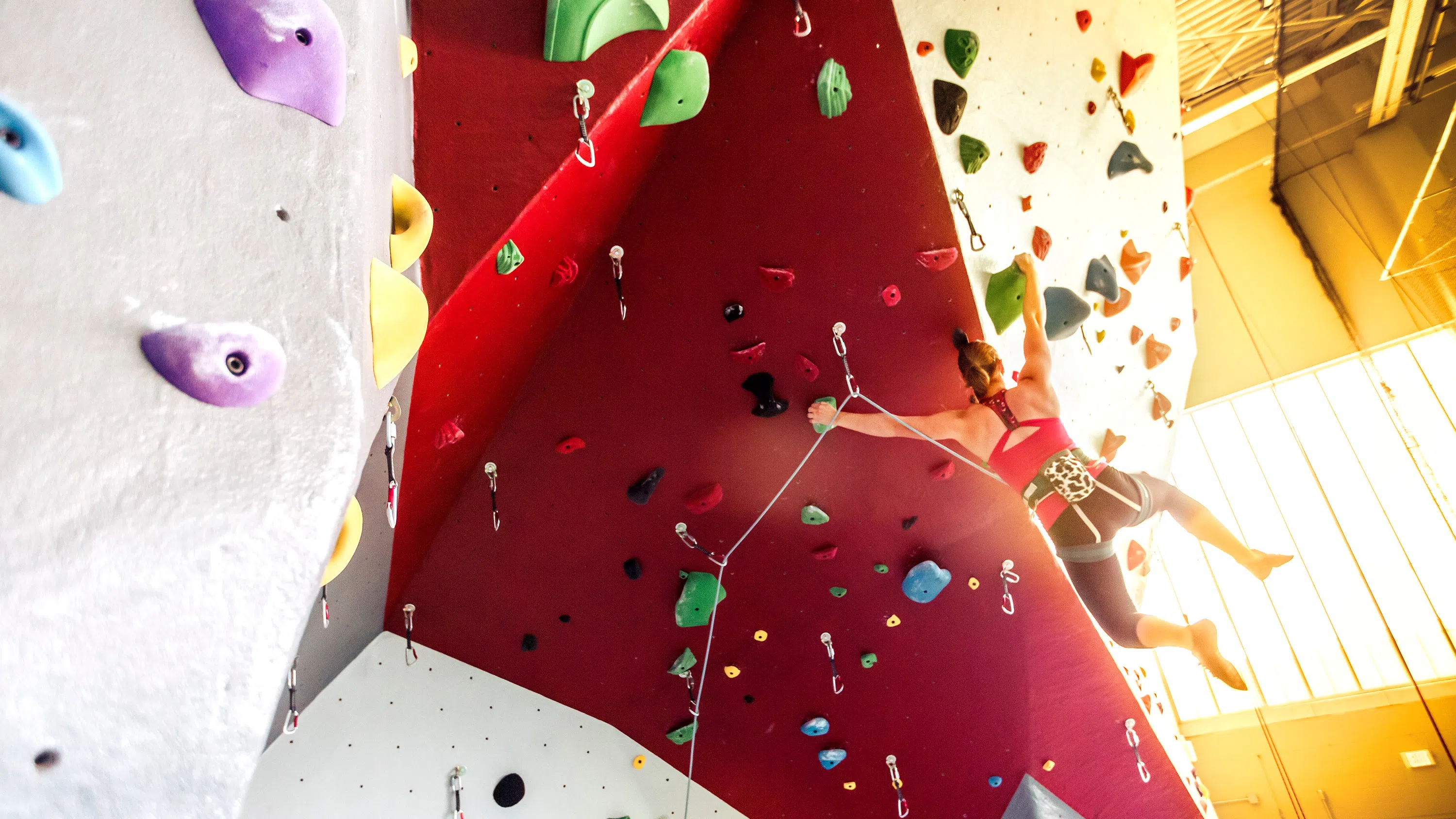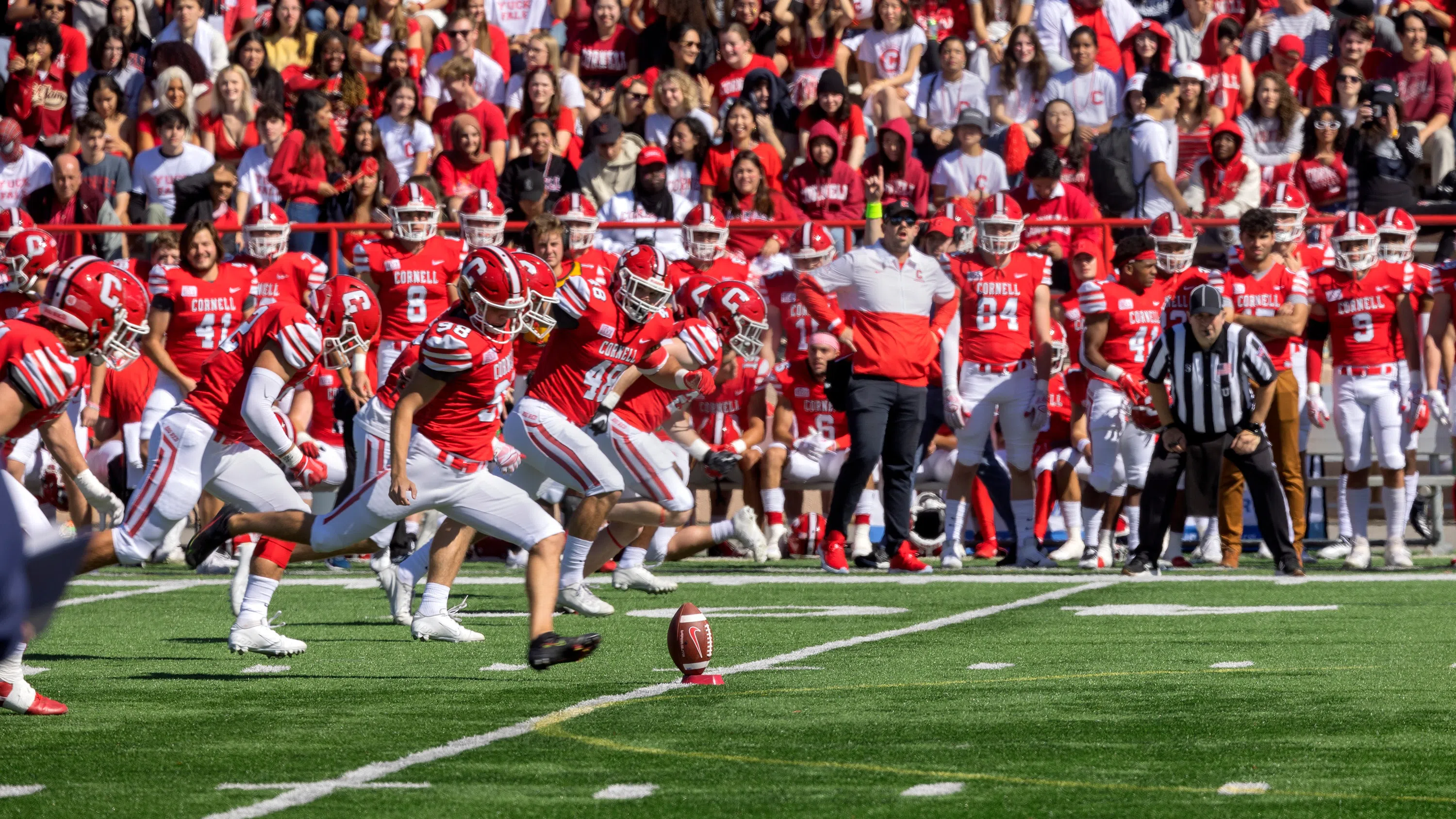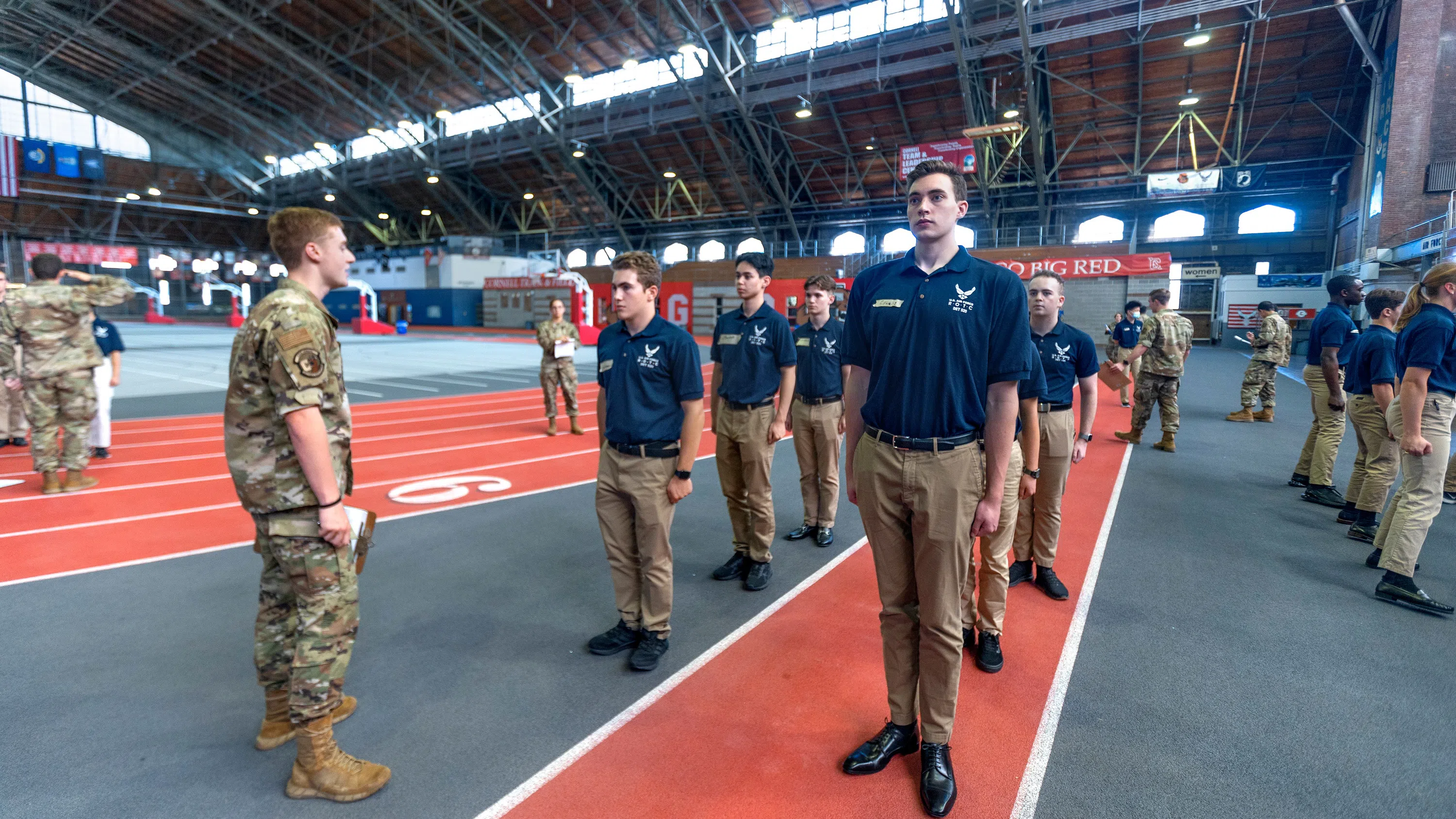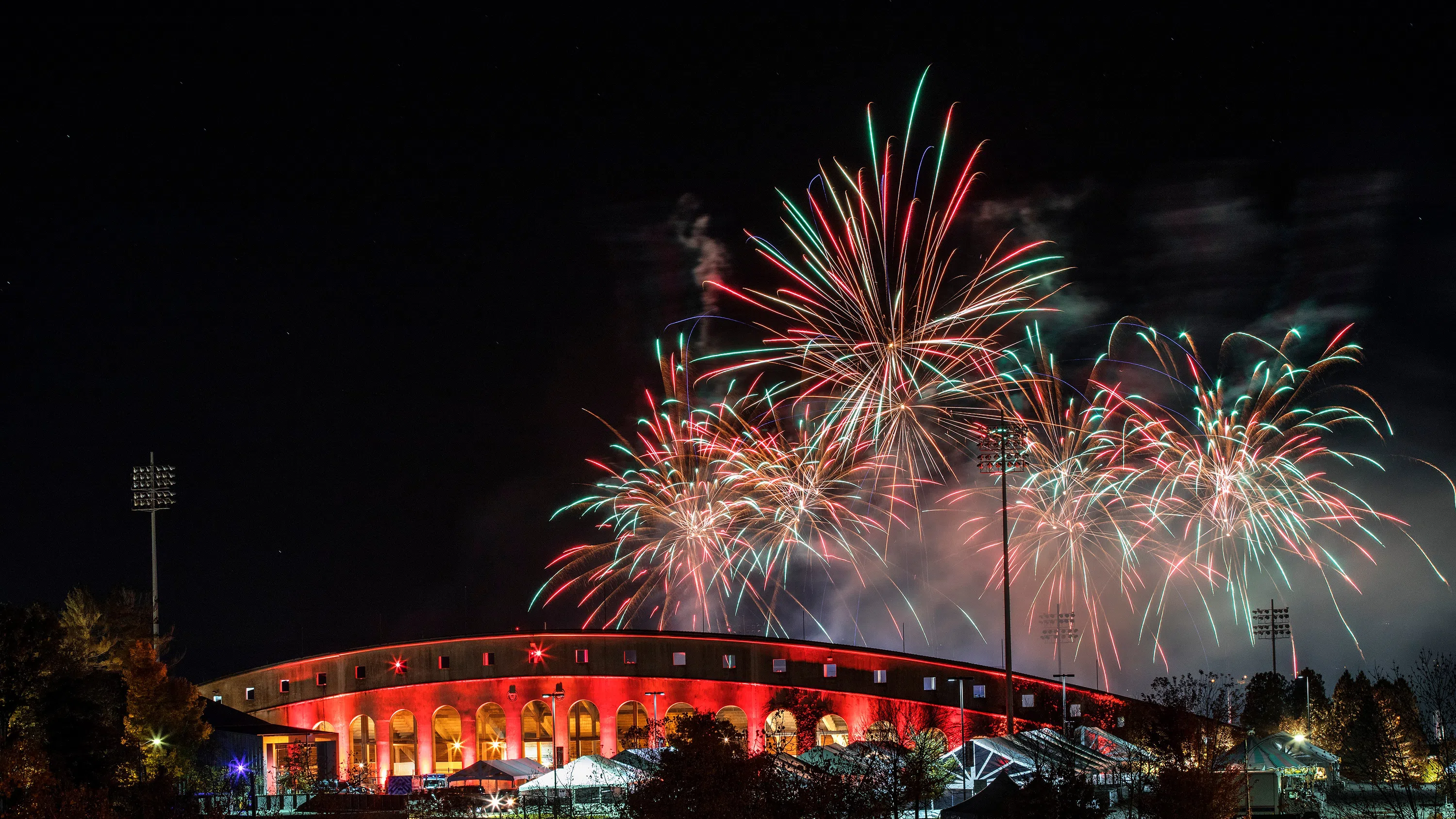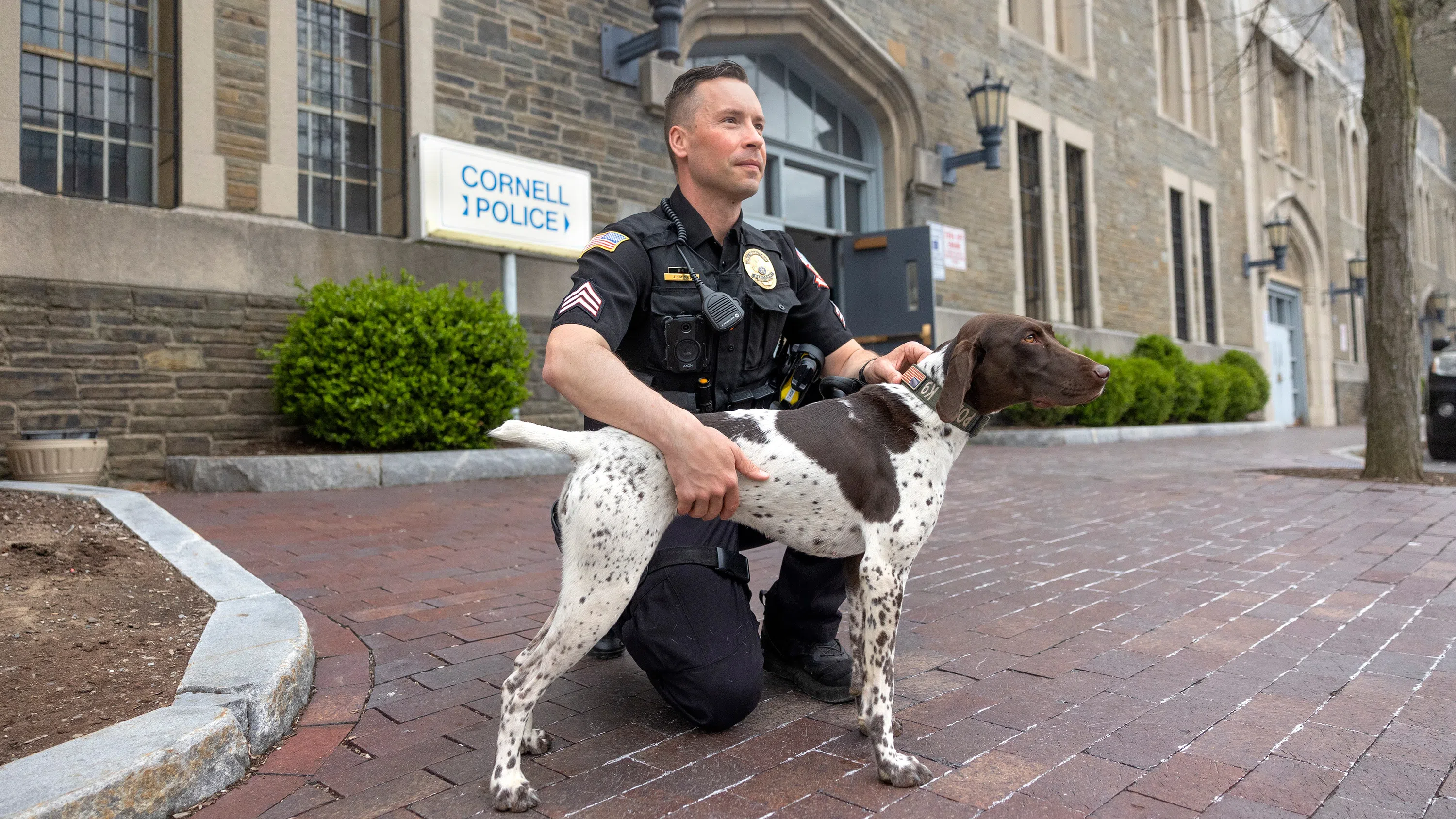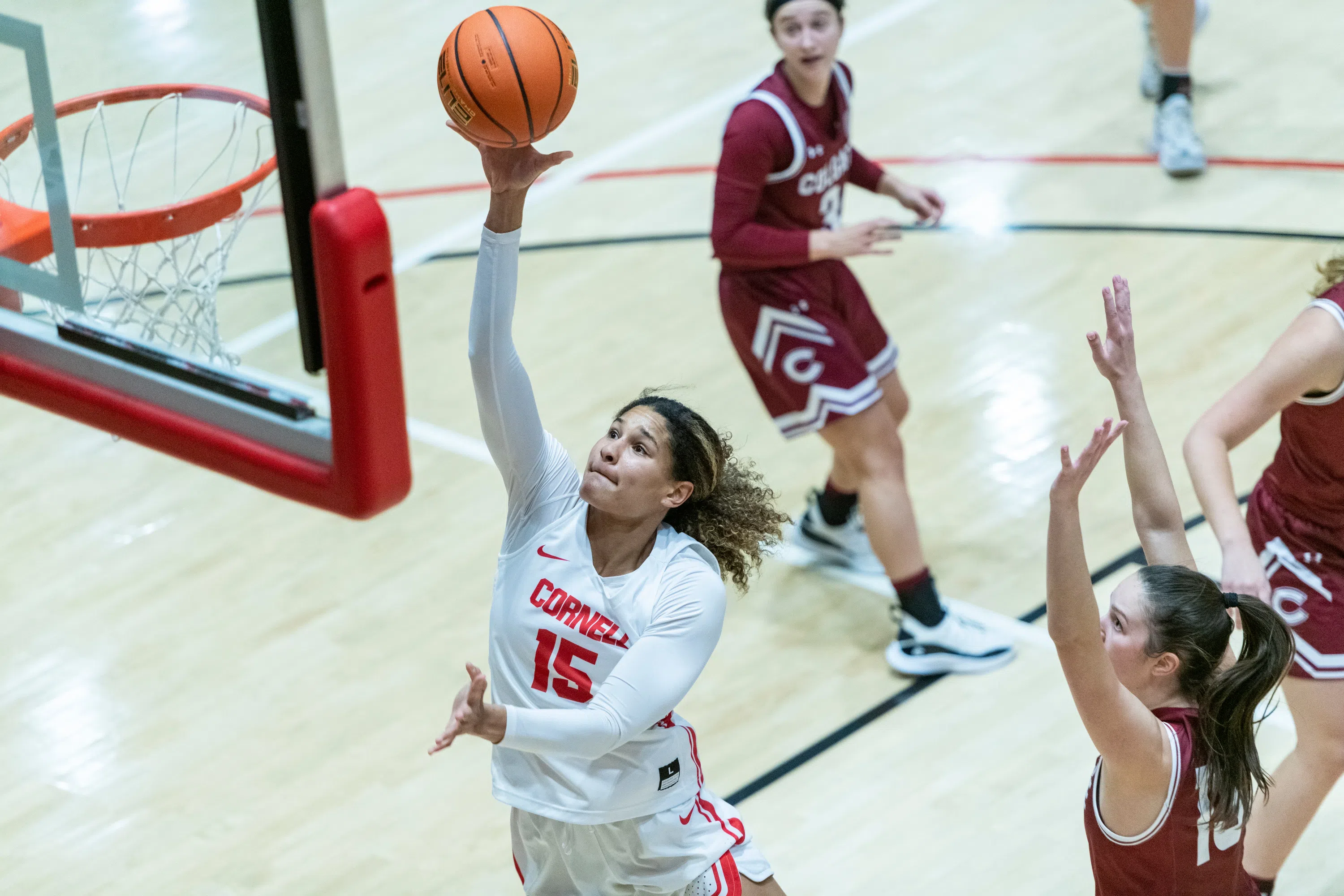Barton Hall was built as a drill hall for the Cadet Corps and served as a ground school for military aeronautics during World War I. Today, the building houses the Department of Military Science, which includes the Army, Navy and Marine Corps and Air Force ROTC programs. Barton is also home to the indoor track and field facilities as well as the Division of Public Safety and Cornell Police.
Scroll and click on images to explore:
Media Gallery
Cornell Athletics and Recreational Facilities
A Community-Based Approach to Campus Safety
Veterans and the Military Community
⭐ Cornell Athletics and Recreational Facilities
Cornell is home to 37 Division I varsity athletic teams, nearly 100 club-level sports and one of the biggest college-organized intramural programs in the country. With more than 100 Ivy League team titles and 35 national championships, Cornell has a long, rich tradition of intercollegiate athletic excellence. Fans often pack Lynah Rink to cheer on Big Red hockey teams and Schoellkopf Field for football and lacrosse games; the latter is also the site of annual Commencement ceremonies.
Students participate in numerous recreational and physical education offerings, including the nation’s oldest collegiate and outdoor education programs. Undergraduate students are required to take two physical education (PE) courses during their first year, choosing from more than 250 courses, from backpacking to bowling, weight training to wilderness medicine. Recreational fun for wellness includes shooting hoops at Newman Arena and scaling the wall at Lindseth Climbing Center.
Students participate in numerous recreational and physical education offerings, including the nation’s oldest collegiate and outdoor education programs. Undergraduate students are required to take two physical education (PE) courses during their first year, choosing from more than 250 courses, from backpacking to bowling, weight training to wilderness medicine. Recreational fun for wellness includes shooting hoops at Newman Arena and scaling the wall at Lindseth Climbing Center.
⭐ A Community-Based Approach to Campus Safety
Barton Hall is the headquarters of the Division of Public Safety. Cornell takes a comprehensive approach to public safety, prioritizing transparency, empathy and the recruitment of community-focused employees. Public Safety operates its own 911 communications center, reachable by phone, the Rave Guardian app and blue-light phones around campus.
As part of Cornell’s ongoing efforts to promote racial justice, the university has worked to implement an alternative response model. When a 911 call is received, dispatchers determine whether to refer the call to the Community Response Team, Emergency Medical Service, police or the Fire Department. Staff in the Cornell University Police Department undergo regular training on de-escalation techniques and trauma-informed interactions, and also offer crime prevention programs including self-defense and how to protect personal possessions from theft.
The Community Response Team (CRT) is a trauma-informed, mobile crisis care program that includes both professional and paraprofessional staff (for example, a master’s-level clinician with a peer support staff person). The team’s objective is to provide an in-person and health-centered response to non-criminal, non-violent 911 calls and thereby reduce the need for police response. CRT plays a key role as the supportive interface linking persons in crisis, the Division of Public Safety and wraparound services across Cornell and the Ithaca area.
As part of Cornell’s ongoing efforts to promote racial justice, the university has worked to implement an alternative response model. When a 911 call is received, dispatchers determine whether to refer the call to the Community Response Team, Emergency Medical Service, police or the Fire Department. Staff in the Cornell University Police Department undergo regular training on de-escalation techniques and trauma-informed interactions, and also offer crime prevention programs including self-defense and how to protect personal possessions from theft.
The Community Response Team (CRT) is a trauma-informed, mobile crisis care program that includes both professional and paraprofessional staff (for example, a master’s-level clinician with a peer support staff person). The team’s objective is to provide an in-person and health-centered response to non-criminal, non-violent 911 calls and thereby reduce the need for police response. CRT plays a key role as the supportive interface linking persons in crisis, the Division of Public Safety and wraparound services across Cornell and the Ithaca area.
⭐ Veterans and the Military Community
Cornell graduates have served the U.S. armed forces with distinction in every major conflict since the Spanish-American War. As New York’s land-grant university, Cornell has a foundational responsibility to provide military education programs. The university established its first ROTC program in 1917, and today hosts ROTC branches for the Army, the Navy and Marine Corps and the Air Force.
Military veterans are a valued part of the Cornell community, as students, staff and faculty. The university has a dedicated student veterans advisor ensuring a smooth transition to campus life for veterans, active-duty personnel, reservists and their families.
Student veterans can also take advantage of offerings including the Students with Families Center and Student Disability Services, and also receive assistance with education benefits available to eligible veterans.
Military veterans are a valued part of the Cornell community, as students, staff and faculty. The university has a dedicated student veterans advisor ensuring a smooth transition to campus life for veterans, active-duty personnel, reservists and their families.
Student veterans can also take advantage of offerings including the Students with Families Center and Student Disability Services, and also receive assistance with education benefits available to eligible veterans.

